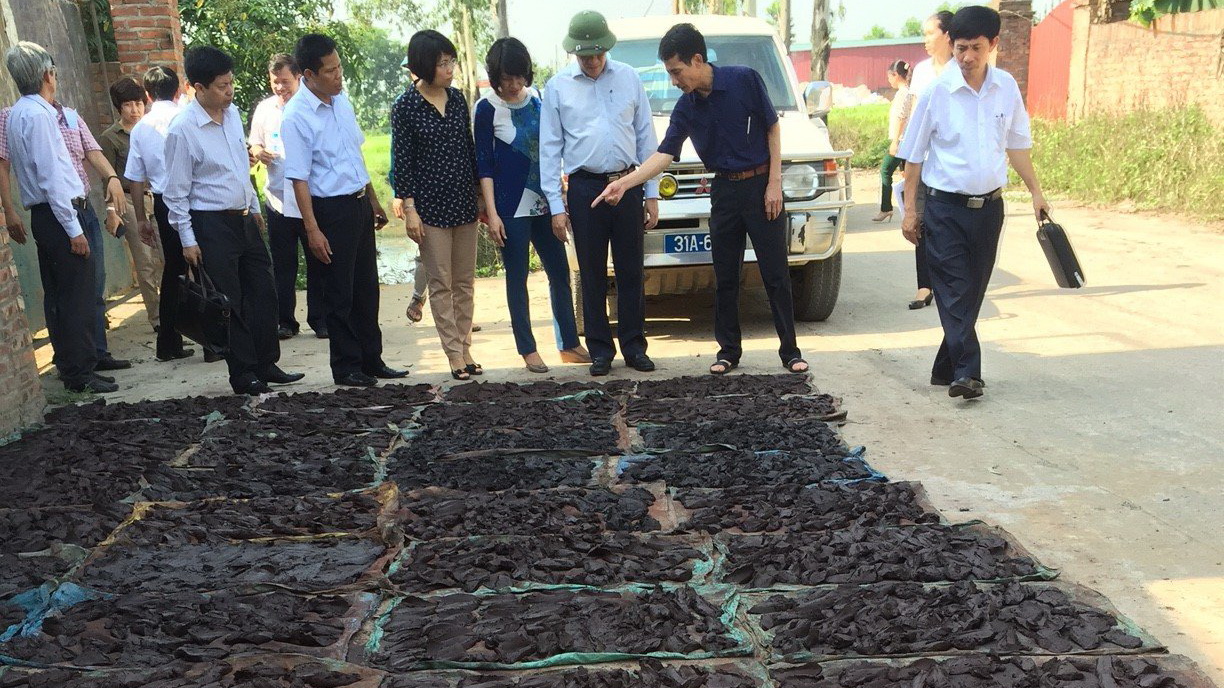Two units under the Ministry of Natural Resources and Environment and the Ministry of Health are at each other’s throats over a list of villages the former believes to have cancer rates higher than the country’s average.
The list, which includes ten villages scattered across Vietnam’s northern, central and southern regions, is kept for monitoring by the environment ministry's National Center for Water Resources Planning and Investigation (NAWAPI).
According to the NAWAPI, cancer rates in these villages range between 73 and 169 per 100,000 residents, a rate it attributes to the villagers’ use of lead-contaminated water for drinking and daily activity.
However, officials at the Health Environment Management Agency (HEMA) under the Ministry of Health, have rebuked the need for such a list, noting that cancer rates observed in these so-called ‘cancer villages’ are well within the country’s average cancer rates of 135/100,000 for females and 181/100,000 for males, and even lower than the global cancer morbidity rate of 182/100,000.
This means, according to the health ministry agency, there are no such things as the 'ten cancer villages'.

A woman disassembles an accumulator to collect its lead content in a village in Hung Yen Province. Photo: Tuoi Tre
Is water the culprit?
While the NAWAPI says lead-contaminated water is to blame for the high cancer rates, HEMA says water samples from households with cancer patients collected by scientists from the National Institute of Occupational and Environmental Health and Nha Trang Province Pasteur Institute show no signs of carcinogenic substances.
The scientists tested the levels of such heavy metals as arsenic, cyanide, chromium, cadmium, nickel, phenol and their derivatives, and found that indicators in each of the 63 collected samples were within acceptable limits.
“Twenty-two out of the 63 samples returned exceeding levels of turbidity, manganese, chloride, iron, E. coli and chloroform, but these are not causes of cancer,” the HEMA report reads.
If water is not the culprit, then what is?
According to Nguyen Ba Duc, former director of Vietnam National Cancer Hospital in Hanoi, the recent surge of cancer in Vietnam may be attributed to improved life expectancy, leading to more prolonged exposure to carcinogens.
Smoking accounts for over 30 percent of Vietnam’s cancer cases, while unbalanced diet and unsafe food contribute between 35 and 40 percent. The remaining 5-10 percent of cancer cases are caused by infections, Duc said.
NAWAPI’s ‘cancer villages’ list was also questioned by an official from the Institute for Cancer Prevention Research, who said the determination of cancer risk factors involves in-depth research carried out over a significant period of time..
“Research on the link between active and passive smoking and cancer alone took about 30 years,” the expert explained, noting that the surveys on the ‘cancer villages’ had been found wanting.
NAWAPI and health agencies have scheduled a meeting in February to review their survey findings and issue a joint report on the matter.
Like us on Facebook or follow us on Twitter to get the latest news about Vietnam!





















































